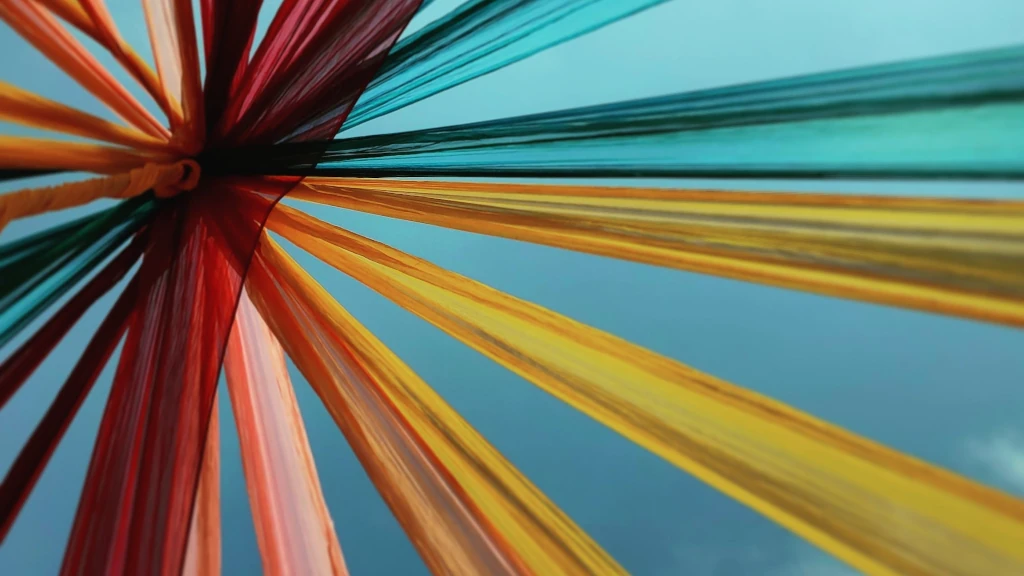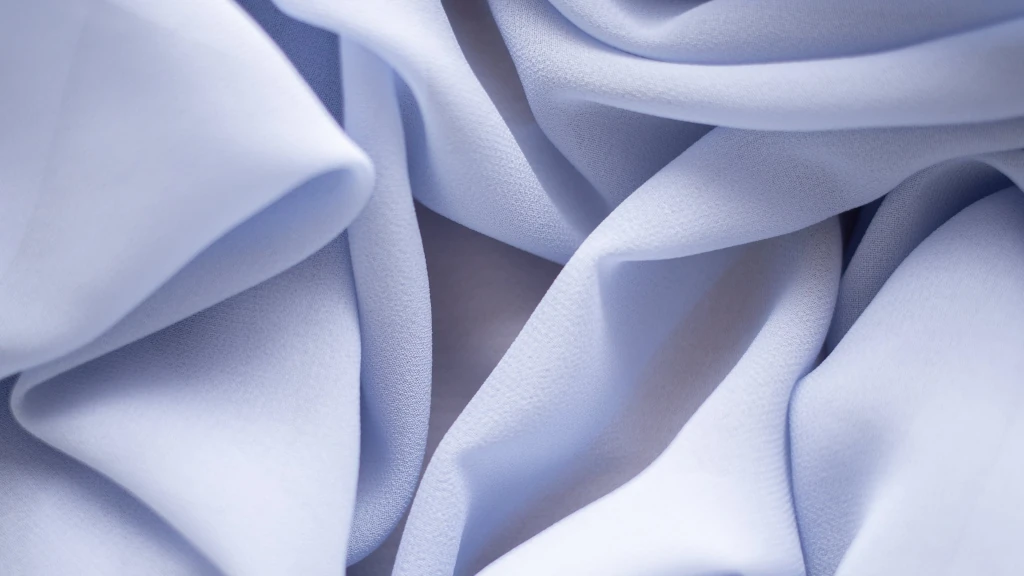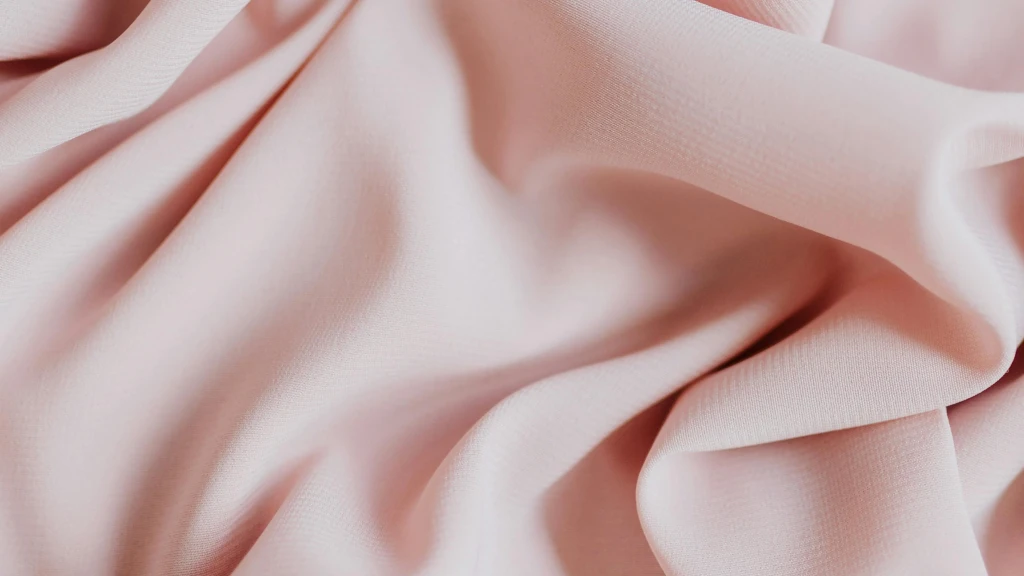The Benefits of Lyocell: How the Solvent Spinning Process Creates High-Quality Textiles
Lyocell, a form of cellulose fiber has become increasingly popular in recent times due to its eco friendly nature and performance benefits compared to both synthetic and natural fibers. Derived from wood pulp, an biodegradable source, Lyocell is produced using a solvent spinning technique that reduces the use of harmful chemicals while also recycling water and solvents. Known for its texture, durability, high strength, exceptional moisture absorption and breathability as well as minimal shrinkage and pilling, Lyocell fibers are versatile and find application in various sectors, like clothing, bedding, towels, medical dressings and nonwovens.
In this article we’ll delve into the creation journey of Lyocell fabrics and fibers starting from the materials to the end result. Additionally we’ll talk about how the production affects the environment, including factors like carbon dioxide emissions, water consumption, chemical usage and energy usage and draw comparisons with traditional textile fibers. Lastly we’ll shed light on the advantages of this fabric, for consumers, manufacturers and our planet.
Raw Materials
The main raw material for Lyocell production is wood pulp which is a renewable and biodegradable resource. This explains why Tencel uses wood pulp that comes from trees grown in ecologically sustainable forests, mostly certified by The Forest Stewardship Council. Eucalyptus trees are the commonest sources of Lyocell’s wood pulp due to their fast growth rate, low water and pesticide requirements, as well as carbon sequestration during their growing period. Depending on the availability and quality of the wood, other types of wood like oak, birch or bamboo can be used in production of Lyocell.
The wood pulp is further processed to dissolve lignin, hemicellulose, and other impurities that could interfere with the dissolving and spilling stages. Though the methods can vary, they usually involve mechanical, chemical, or enzymatic treatments, such as chipping, pulping, bleaching, or refining. The aim is to obtain pure cellulose fibers with high degrees of polymerization and crystallinity, which are key factors for the strength and quality of Lyocell fibers. The cellulose fibers are then dried and packed into bales or rolls, ready to be transported and stored.
How is Lyocell Made? The Solvent Spinning Process Explained
The manufacturing process of Lyocell involves four main steps: dissolving, spinning, washing, and finishing.
1. Dissolving
The startpoint is the key to the process, as it involves the direct dissolution of cellulose in a solvent, without any chemical modification or intermediate steps. The solvent used for Lyocell production is N-methylmorpholine-N-oxide (NMMO), a tertiary amine oxide that can dissolve cellulose at high temperatures and low water content. NMMO is a non-toxic, biodegradable, and recyclable solvent that does not produce any harmful by-products or emissions.
The dissolving step is carried out in a heated and pressurized vessel, where the wood pulp is mixed with NMMO and water. The water content of the mixture is carefully controlled to ensure the complete dissolution of cellulose and the formation of a homogeneous and viscous solution, called dope. The dope is then filtered and degassed to remove any air bubbles or impurities.
2. Spinning
The spinning step is the process of converting the dope into solid fibers. The dope is extruded through a spinneret, a device with thousands of tiny holes, into an air gap and then into a water bath. The water bath cools down the dope and causes the cellulose to precipitate and solidify, forming continuous filaments. The filaments are then collected on a conveyor belt or a bobbin, depending on the desired product.
It can be adjusted to produce different types of Lyocell fibers, such as staple fibers, filament fibers, or tow fibers. Staple fibers are short fibers that are cut to a certain length, usually between 38 and 51 mm. Filament fibers are long and continuous fibers that can be twisted or textured to create different effects. Tow fibers are bundles of continuous fibers that are later cut into staple fibers.
3. Washing
This is the process of removing the residual solvent and water from the fibers. The fibers are washed with hot water and then with cold water, in a series of washing tanks. The washing step also removes any impurities or additives that may have been added to the dope or the spinning bath. The washing step is crucial for the quality and performance of the fibers, as it affects their physical and chemical properties, such as tenacity, elongation, moisture regain, and dyeability.
For Tencel Lyocell this is also the most environmentally friendly part of the process, as it recovers and recycles the solvent and water used in the previous steps. The solvent and water are separated by evaporation and distillation, and then reused in the dissolving and spinning steps. The recovery rate of the solvent and water is over 99%, which means that the Tencel Lyocell process is almost a closed-loop system, with minimal waste and emissions.
4. Finishing
The fibers can also be treated with various agents, such as softeners, lubricants, antistatic agents, or flame retardants. Finishing is the final step in the production of Lyocell textiles and fibers, and it involves various treatments to improve the appearance, performance, and functionality of the fabrics. Some of the common finishing processes are:
Drying
Is done to remove the excess moisture from the fibers and fabrics. Drying can be done by using hot air, infrared, or microwave methods. Drying also helps to improve the dimensional stability and shrinkage resistance of Lyocell.
Softening
It enhances the softness, smoothness, and drapability of the fabrics. Softening can be done by using mechanical, chemical, or enzymatic methods. Mechanical softening involves the use of calenders, nappers, or sanders to compress or roughen the fabric surface. Chemical softening involves the use of softeners, such as silicones, fatty acids, or polyethylene glycols, to coat or penetrate the fibers. Enzymatic softening involves the use of cellulases, which are enzymes that break down the cellulose molecules and reduce the fibrillation of Lyocell.
Dyeing
It imparts color to the fabrics. Dyeing can be done by using various types of dyes, such as reactive, direct, vat, sulfur, or indigo dyes. Lyocell has a high affinity for dyes and can produce bright and deep shades with good color fastness. Dyeing can be done at different stages of the production process, such as fiber, yarn, fabric, or garment dyeing.
Printing
This is done to create patterns or designs. Printing can be done by using various techniques, such as screen, roller, inkjet, or digital printing. Printing can also be done by using different types of dyes, such as pigment, reactive, or disperse dyes. Printing can enhance the aesthetic appeal and functionality of Lyocell fabrics.
Functional finishing
Means to impart special properties or functions, such as flame retardancy, water repellency, antibacterial, antistatic, or UV protection. Functional finishing can be done by using various agents, such as phosphorus, fluorocarbons, silver, or titanium dioxide, to coat or modify the fibers. Functional finishing can improve the performance and durability of Lyocell fabrics.

What are the Environmental Impacts of Lyocell Production? A Comparison with Other Cellulosic Fibers
As you can see, Lyocell is the most eco-friendly and advanced type of cellulosic fiber, as it uses a sustainable and efficient production process that minimizes the environmental impact. Lyocell also has many desirable properties that make it suitable for various textile applications, such as clothing, bedding, towels, and nonwoven fabrics. Lyocell is often considered as a superior alternative to cotton, rayon, and modal, as it offers better quality, performance, and functionality.
| Fiber | Source | Production process | Environmental impact | Properties | |||
|---|---|---|---|---|---|---|---|
| Lyocell | Wood pulp | Solvent spinning with NMMO (in a closed-loop system with Tencel yarns) | Low CO2 emissions, water usage, chemical usage, and energy consumption | Soft, strong, absorbent, breathable, biodegradable, versatile, odour-free | |||
| Cotton | Cotton plant | Mechanical harvesting and spinning | High water usage, pesticide usage, land usage, and energy consumption | Soft, strong, absorbent, breathable, biodegradable, natural, durable | |||
| Rayon | Wood pulp | Chemical treatment with CS2 and NaOH in an open-loop system | High CO2 emissions, water pollution, chemical waste, and energy consumption | Soft, smooth, lustrous, absorbent, biodegradable, versatile, low-wet strength | |||
| Modal | Wood pulp | Chemical treatment with CS2 and NaOH in a modified system | Moderate CO2 emissions, water pollution, chemical waste, and energy consumption | Softer, stronger, more stable, more absorbent, biodegradable, shrink-resistant, durable |
What are the Benefits of Lyocell? The Properties and Applications of the High-Quality Textile
Lyocell is a type of regenerated cellulose fiber that has many benefits over other cellulosic fibers, such as cotton, rayon, and modal. Its made from wood pulp using a solvent spinning process that is environmentally friendly and efficient. They have the following properties that make them ideal for various textile applications:
Softness
These fibers are very soft and smooth, with a silky feel and a natural shine. So they are comfortable to wear and gentle on the skin, making them suitable for clothing, bedding, towels, and underwear.
Strength
They are also very strong, especially when wet. Lyocell fabrics are durable and resistant to abrasion, tearing, and pilling. That’s why they can withstand repeated washing and wear without losing their quality or shape.
Absorbency
This fibers are very absorbent, with the ability to absorb up to 50% of their weight in water. So they can wick away moisture from the skin and keep the wearer cool and dry. Also they are odour-free, as they do not retain any bacteria or smell.
Breathability
On top of that they are very breathable, allowing air to circulate through the fabric and regulate the temperature. Making them suitable for any weather, as they can keep the wearer warm in winter and cool in summer.
Biodegradability
Finally these fibers are 100% biodegradable and compostable, as they are made from natural and renewable materials. They can decompose in a few months under the right conditions, without leaving any harmful residues or pollutants.
Being a low-maintenance fabric, it does not require much care to keep it looking and feeling its best. However, there are some tips and tricks that can help you extend the lifespan and quality of your lyocell products. Here are some of them:
Washing
It can be machine washed or hand washed, depending on the care label instructions. Always use a gentle cycle and a mild detergent, and wash with similar colors. Avoid using bleach, fabric softeners, or harsh chemicals, as they can damage the fibers. Do not wring or twist the fabric, as it can cause stretching or distortion.
Drying
Lyocell products can be tumble dried or air dried, depending on the care label instructions. Please use a low heat setting and remove the fabric from the dryer as soon as it is dry. Avoid over-drying, as it can cause shrinkage or wrinkling. If air drying, lay the fabric flat or hang it on a line, and avoid direct sunlight, as it can cause fading or yellowing.
Ironing
Depending on the care label instructions, the fabrics can be ironed or steamed. Use a low to medium heat setting and iron on the reverse side of the fabric. Avoid using a high heat setting or a steam iron, as they can scorch or damage the fibers. Try to use a pressing cloth or a damp cloth to protect the fabric from direct heat.
Final Thoughts: How Lyocell Offers Comfort, Quality, and Sustainability
Lyocell is a remarkable fiber that offers a sustainable and high-quality alternative to other cellulosic fibers, such as cotton, rayon, and modal. Made from wood pulp using a solvent spinning process that is environmentally friendly and efficient. Having has many desirable properties that make it suitable for various textile applications, such as clothing, bedding, towels, and nonwoven fabrics. It is soft, strong, absorbent, breathable, biodegradable, and versatile.
Apart from that it also has many benefits for the environment and the consumers, such as reducing the environmental impact of textile production, improving the quality, performance, and functionality of textile products, and enhancing the health and well-being of the consumers. This is a low-maintenance fabric that does not require much care to keep it looking and feeling its best. All in all its a wonderful fabric that offers comfort, quality, and sustainability.
How to Learn More About Lyocell: FAQ
What is Lyocell?
This fiber is semi-synthetic and based from wood pulp using a solvent spinning process. It is a form of regenerated cellulose that has many advantages over other cellulosic fibers, such as high strength, softness, absorbency, breathability, and biodegradability.
How is Lyocell made?
Basically it is made by dissolving wood pulp in a non-toxic solvent called N-methylmorpholine-N-oxide (NMMO) (in a closed-loop system with Tencel yarns). The dissolved pulp is then extruded through a spinneret to form long and thin fibers. The fibers are then washed, dried, and finished to create various textile products.
Is Lyocell sustainable?
Due to fact that it uses a renewable resource (wood) that sequesters carbon and requires minimal inputs (water, land, pesticides), it is considered a sustainable fiber. It also uses a non-toxic solvent that is recycled and reused in the production process, minimizing waste and pollution. Lyocell is also 100% biodegradable and compostable, meaning it can decompose without harming the environment. Keep in mind that your fabric needs to be pure and not mixed with different types of textile like Elastane or Polyester.
What are the properties of Lyocell?
Soft, smooth, lustrous, and silky, with a natural shine and a pleasant feel are the desirable properties that make it suitable for various textile applications, such as clothing, bedding, towels, and nonwoven fabrics. Also being strong, durable, resistant to abrasion, tearing, and pilling. Also this fabric is absorbent, breathable, odour-free, and temperature-regulating, keeping the wearer cool and dry. Lyocell is also versatile, biodegradable, and easy to care for.
How to dye Lyocell?
Of course it can be dyed by using various types of dyes, such as reactive, direct, vat, sulfur, or indigo dyes. Lyocell has a high affinity for dyes and can produce bright and deep shades with good color fastness. Dyeing can be done at different stages of the production process, such as fiber, yarn, fabric, or garment dyeing. Dyeing can also be done by using natural dyes, such as plants, fruits, or vegetables, to create eco-friendly and unique colors.
What is the difference between Lyocell and Tencel?
Lyocell and Tencel are often used interchangeably, but they are not exactly the same. Lyocell is the generic name of the fiber, while Tencel is the brand name of a specific type of Lyocell produced by the Austrian company Lenzing AG. Tencel is made from eucalyptus wood sourced from certified and controlled forests, and uses an advanced technology that recovers and reuses more than 99% of the solvent and water used in the production process. Tencel also has a higher quality and consistency than other types of Lyocell, and offers various grades and variations, such as Tencel Active, Tencel Denim, Tencel Home, Tencel Luxe, and Tencel Modal.





